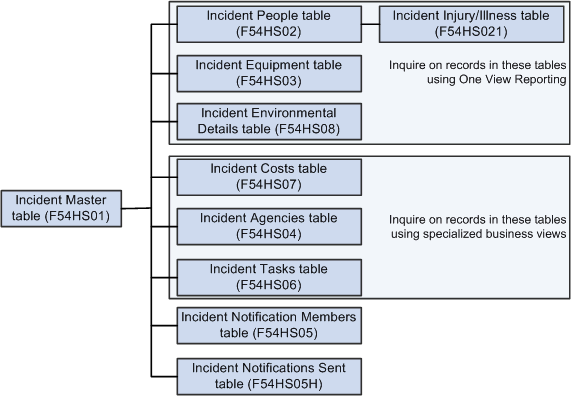Understanding One View Reporting for the JD Edwards EnterpriseOne Health and Safety Incident Management System
You use the JD Edwards EnterpriseOne One View Reporting for Health and Safety Incident Management system to analyze and report on health and safety incidents. There are five One View Reporting programs in the JD Edwards EnterpriseOne Health and Safety Incident Management system:
One View Incident Summary Inquiry program (P54HS220)
One View Incident People Inquiry program (P54HS230)
One View Incident Equipment Inquiry program (P54HS240)
One View Incident Environment Inquiry program (P54HS250)
One View Incident Safety Statistics Inquiry program (P54HS260)
The One View Reporting programs for the JD Edwards EnterpriseOne Health and Safety Incident Management system enable you to analyze incidents by the people involved, equipment involved, key incident attributes, incident classifications, costs, and environmental impact details. You can associate an incident with different types of records, for example, people records, equipment records, and so on. These records are associated to the incident in a one-to-many relationship, which means that an incident can have many people or many equipment records associated with it. These records are related to the incident, however, they may not be related to each other. You can also associate an incident with other types of records, such as agencies, tasks, environmental impact details and costs, in a one-to-many relationship. The One View Reporting for Health and Safety Incident Management programs facilitate searching and reporting on incidents, people, equipment, and environmental impact records, and calculates safety metrics.
To search and report on agencies, tasks, and costs, you can use specialized business views.
The system stores the each type of incident record in different tables as illustrated in the following graphic.
